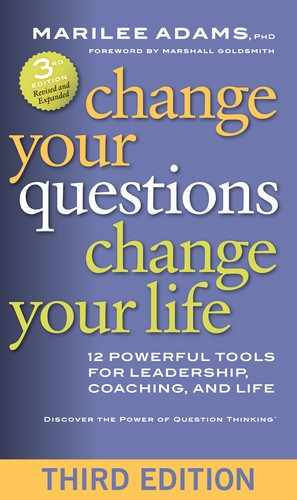Tool 7: Take Advantage of Switching Questions
See Chapter 6, “Switching Questions”
For the ABCD formula, see Chapter 7,
“See with New Eyes, Hear with New Ears”
Purpose: To facilitate easier course corrections from the Judger path onto the Learner path.
Discussion: In Chapter 6, Joseph introduces Switching questions, a special kind of Learner question that depends first on being able to observe Judger. Ben learns to ask Switching questions whenever he finds himself in Judger. The Choice Map helps him to remember this shortcut from Judger back to Learner.
Think of Switching questions as “rescue,” “turnaround,” or “course-correction” questions. They can literally rescue you from Judger experiences or consequences. Switching questions can give you the opportunity not only to choose a new course but sometimes also to make major breakthroughs. Just as with developing any other new ability, the more you use Switching questions the better you get at it.
By their very nature, Switching questions are from-to questions, meaning they can carry us from Judger to Learner. We all use Switching questions whether we realize it or not; the more aware we are of using them, the more predictably we are able to choose them at will.
The best Switching questions are those that feel most natural and accessible to you. These are the questions you most easily and consistently reach for and use. The more “grooved in” they are, the more effective they will be. The following list of Switching questions includes some contributed by participants in workshops over the years.
• Am I in Judger? (This awareness is always first.)
• Is this what I want to be feeling?
• Is this what I want to be doing?
• Where would I rather be?
• How can I get there?
• Is this working?
• What are the facts?
• How else can I think about this?
• What assumptions am I making?
• What is the other person thinking, feeling, and wanting?
• What humor can I find in this situation?
• What’s my choice or decision right now?
I encourage you to add other switching questions as you think of them.
Practice 1: Think of a past situation that was difficult or frustrating for you but that you managed to turn around. Think about what your Switching questions might have been in those situations. Why did they make a difference? When you discover the questions you asked intuitively, you’ll be able to use them more intentionally, skillfully, and successfully.
Practice 2: The ABCD Choice Process—Pick a current challenging situation in which you desire a change and follow the ABCD format described in Ben’s story in Chapter 7.
